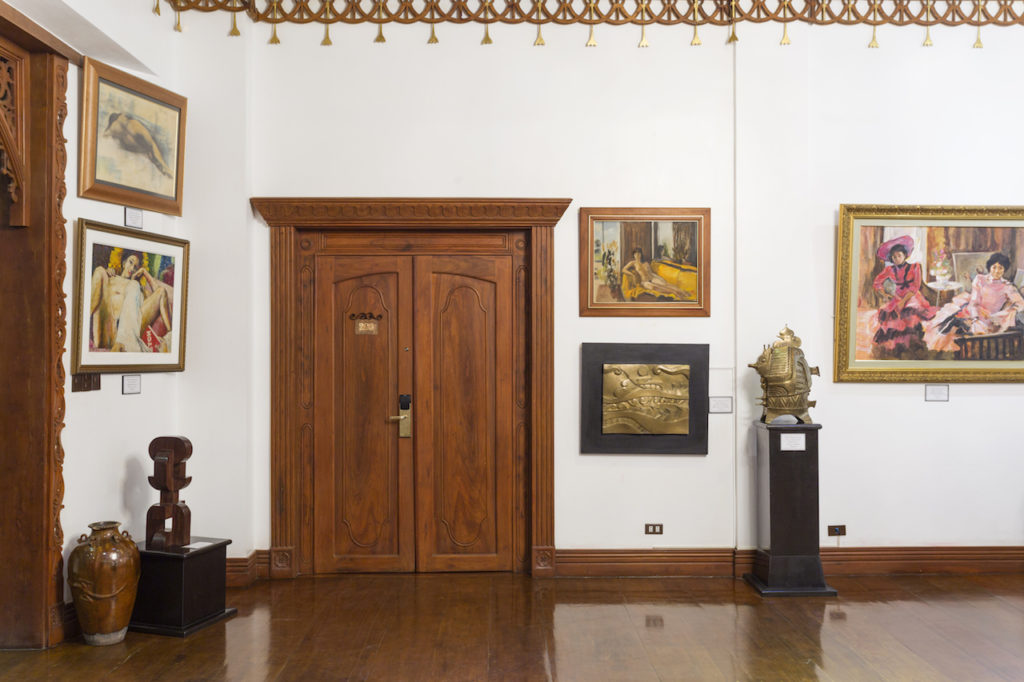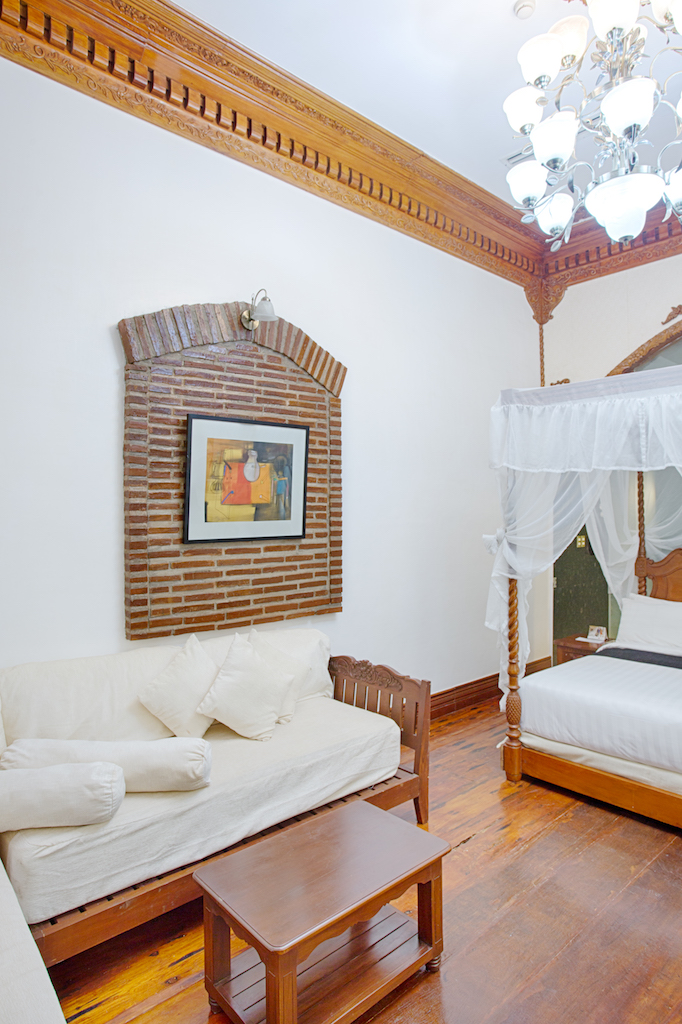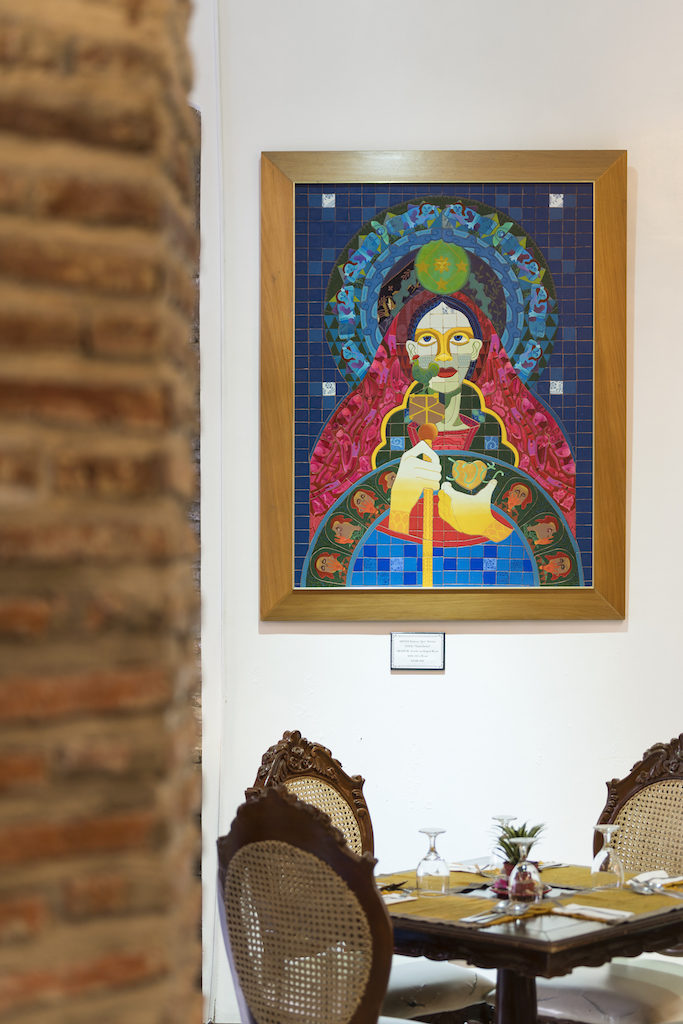At Hotel Luna in Vigan, it’s not too bizarre to claim that you’ve stayed the night with famed artist Fernando Amorsolo or had a meeting with Napoleon Abueva. They are, after all, the hotel’s longest-staying guests.
Established as the first museum hotel in the Philippines, Hotel Luna has banked on its art ambitions to transform itself into an iconic Ilocos landmark just four years after its inception. But it’s clear from the onset that its well-earned eminence came with a slew of expectations.
Naming a hotel—let alone an art-driven one—after the greatest Filipino painter in history is like setting itself up for failure. But Ilocos Sur second district representative Eric Singson and ArtStream Hospitality Management Group, Inc. have somehow successfully navigated around the repercussions of such specific branding with grace and aplomb. Based on the trajectory of its reputation, Hotel Luna is following the same cocksure path as La Colombe d’Or in France, which hangs a Matisse and Picasso, and The Dolder Grand in Switzerland, which boasts a Miró and a Dalí. Like these art hotel meccas, there was no trial and error for Luna—it was all trial and success, even when it first burst into the world.

The original heritage property—which was built in 1882 by a certain Don Jose Florentino as a wedding gift to daughter Doña Carmen Florentino before it was eventually sold to Benigno Que prior to 1990—functions as a historic art piece itself, with a collection that swells with over 200 pieces of classic and contemporary art.
With two Abueva sculptures flanking both sides of the entryway, a particularly potent wooden sunrise carving across the ceiling by Abueva’s son Mulawin—which uses six Philippine indigenous woods, according to F&B supervisor Melvin Martinez—a geometric Arturo Luz original (“Estundiantina”) on the left and a BenCab “Three Women” creation on the right, four iconic artists already make their presence felt even if the art tour is nowhere near the main gallery.
“All of the physical features of the women are almost the same, which is an adaptation of his favorite subject, Sabel, a real-life scavenger model who was pictured and sketched by the artist in 1965 when he stayed in Manila,” elaborates Martinez with delicate confidence as he talks about BenCab’s painting. “All throughout the years, Sabel became his inspiration.”

The hotel features pieces from the Singsons’ private collection but “some collections are on loan [from the artists themselves],” says hotel manager Mark Tandoc. But where other hotel museums or galleries usually only dedicate limited space, the art collection at Hotel Luna moves strategically to unexpectedly build the climax midway at the Grand Sala.
From the staircase where an approximately 300-year-old, eskayola-framed “unknown” painting of European origin lies in wait to an expensive Ronald Ventura original “Left Behind” and a Daniel Dela Cruz brass balancing act sculpture punctuating the collection’s religious undercurrents, each stage rightfully takes time to appreciate before guests arrive at the most prized possession in the Grand Sala: an authentic Juan Luna painting called “La Mandolinera” that was circulated in 1883 and valued at P148 million according to the National Commission on Culture and Arts. “The model in the painting is a gypsy from Naples, Italy,” says Martinez, “and she’s believed to be one of the mistresses of Juan Luna.”
Accompanying the pièce de résistance are an early nude sketch by Filipino Cubist Vicente Manansala, more sculptures by Ramon Orlina, and Amorsolo’s “Lavandera,” which feels appropriate in an ancestral house in which almost 80 percent of the bricks are from the original stone structure. Off the foyer is the private boardroom that houses another interesting work. “[If you’re wondering why] the room is air-conditioned, it’s because of this painting [“Final Sacrifice”] from contemporary artist Jason Cortez. Part of the painting are blood from the artist himself.”

Oddly enough, the Spanish colonial interior feels strangely fresh amid all the mixed media, surrealism, and beautiful Moro paintings from Abdulmari Asia Imao. It would have been easy to fall into the traps of gimmickry and bombast with such a collection, but instead Hotel Luna gets it right, turning the lush pieces scattered throughout into one cohesive environment.
With the overwhelming presence of Filipino art that saturates the 70 rooms, the terrace overlooking the courtyard, the Spanish-Ilocano restaurant Comedor, and the former stable where Chula Saloon Bar now resides, Hotel Luna is a rewarding reminder of true Filipino talent that’s mostly beholden to the weight of the property’s quiet history, willful mining of nostalgia, and, unsurprisingly, passionate commitment to the arts exemplified by the self-taught Martinez himself. That in itself is a welcome surprise before you disappear down the artistic rabbit hole.
Writings on the wall

Canvas Hotel in Puerto Princesa, Palawan is decked with works of art too, but they don’t come in frames. They have been painted on the walls. “It’s a place for the modern traveler,” says Beverly Camarsi, head of marketing of the Oak Drive Hotels and Resorts, Inc. “We weren’t aiming for luxury nor budget. It’s more for the younger market, the smart traveler. Those who want to experience the destination, immerse themselves in the city. Not those who want a staycation and want a room complete with amenities, the bar, and bathtub.” Because exploring Palawan is important to guests who stay at the Canvas Hotel, the owners wanted the artwork to have a connection to the destination, showcasing what the whole province has to offer. Hence, the wall paintings and art installations that take inspiration from Palawan itself.
Each elevator landing and all 49 rooms of the boutique hotel have a mural as a centerpiece. And they fall under a particular theme, categorized per floor: sky and mountain for the top level (fourth), followed by land (third), sea level (second), and underworld (ground floor). To do the job, burgeoning local artists were hired to add color and character to the white walls. Nice Buenaventura presented his take on the pilandok, or the Philippine mouse-deer, in Room 209; Hannah Liongoren interpreted the Tabon Caves in Room 305; and Tof Zapanta depicted the Siete Pecados, one of the province’s famous snorkel sites, in Room 421. Each room highlights places, people, and animals of interest found in Palawan—from the bising (flying squirrels) and Badjao deep sea divers to the Tubbataha Reefs, Banol Beach, and Mt. Tapyas.

At the lobby, a light installation made to exhibit the significant formations of stalactites in the Underground River welcomes guests. In the sole dining area where guests can enjoy their complimentary buffet breakfast, the light fixtures on the ceiling mimic the branches of the balayong, or the cherry trees endemic to the province.
The 12-seater dining table, situated at the center of the restaurant, was one of the last artworks made for the hotel. It was done by AG Saño, who is known for championing the protection of the dolphins in the area. Skilled at painting, the “dolphin guy” used the table as a canvas to illustrate his causes, which include care for the wild and wilderness (represented by the sketches of animal species endemic to the islands like the Palawan turtle and the Palawan hornbill) and the Batac tribe, as personified by the portrait of a girl located at the heart of the table.
The pieces found throughout the boutique hotel have a dual purpose: Not only are they meant to lend artistry to the space, but they’re also there to inform and educate guests about the beauty of the islands.
“We understand that when you start talking about art, people get intimidated. We let the works be a sweet surprise for our guests. Going around the hotel becomes an adventure in itself,” says Beverly Camarsi.
“Even the not-so art aficionados appreciate the murals, especially after learning about the stories behind each of them,” says Camarsi. “One of the most memorable compliments we got is from a female foreigner who was moved to ask about the story of the mural in her room. It eventually prompted her to visit the actual place. That’s the exact intention of the art piece.” Ringing true to Canvas Hotel’s tagline, Inspiring Adventures.
“We understand that when you start talking about art, people get intimidated,” she says when asked why it’s not being marketed as a hotel-cum-art exhibit of sorts. “We let the works be a sweet surprise for our guests. Going around the hotel becomes an adventure in itself.”
Hotel Luna is located at Gen. Luna St., Vigan City, Ilocos Sur.
Contact the hotel at (0917) 564-0727 or visit hotelluna.ph for inquiries.
Canvas Boutique Hotel is located at Palawan North Road corner San Juan Barangay San Miguel, Puerto Princesa, Palawan.
Contact the hotel at (0917) 807-1360 or visit canvasboutiquehotel.com for inquiries.
Originally published in F&B Report Vol. 15 No. 2





